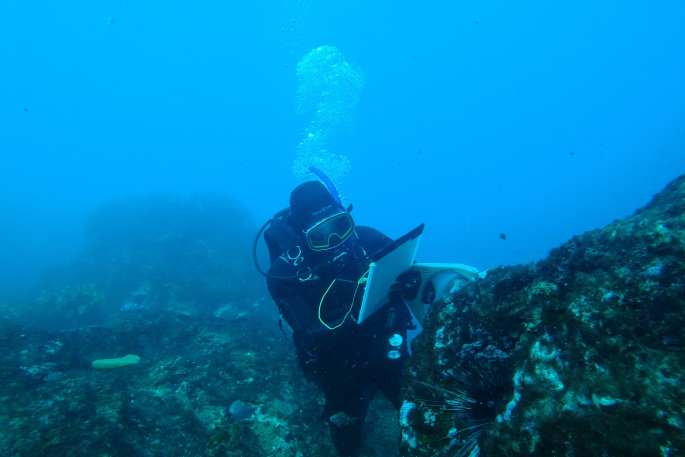Timber slash and debris from flooding events is decimating Aotearoa New Zealand’s vital underwater kelp forests, a nationwide study shows.
Te Whare Wānanga o Waitaha | University of Canterbury Marine Science Distinguished Professor David Schiel is co-leading a five-year $11 million research project exploring the issue.
He says silt and other contaminants from flooded land pour into the sea during increasingly frequent storm events, and this is threatening our coastal ecosystems.
“Sunlight, on which thriving kelp forests depend, is obstructed by this run-off in shallow coastal water. We are now seeing many areas where the kelp is covered with a layer of sediment,” David says.
“Our research shows there’s a rapidly accelerating degradation of our iconic kelp forests and this is a major concern for marine biodiversity,.” .
Kelp forests support many species of invertebrates, sponges and other plants that coastal fish species feed on.
“We saw the effects of Cyclone Gabrielle early in 2023 when slash from recently harvested forestry blocks cascaded down slopes along with torrents of water, mud and debris and swept down into the ocean, often burying kelp forests and their resident species.”
David says that damage is visible in satellite images of the coastline around East Cape.
“There’s a brown area in coastal waters from the clay, soil that has washed down from catchments. That run-off is darkening our coastal waters and smothering our kelp forests.”
The research project Toka Ākau Toitū Kaitiakitanga - Building a sustainable future for coastal reef ecosystems, funded by the Ministry of Business, Innovation and Employment, is a collaboration between UC, the University of Otago, University of Waikato, NIWA, Ngāti Pūkenga, along with other iwi and regional and district councils.
It combines mātauranga Māori (Māori knowledge) with satellite and drone technology, underwater remotely operated vehicles, and environmental DNA to monitor the impacts of inundation on kelp forests at key locations around the country.
David, who also studied the impact of the 2016 Kaikoura earthquake on the marine environment, says storm-related run-off is a problem for most, if not all, of New Zealand’s coastline.
“Increases in land-use intensification and forestry have added to the coastal stressors around the country. We now need to find ways to improve coastal management and prevent run-off from land damaging kelp forests.
“This research aims to identify the areas where this is a problem, find out how big it is and then determine how best to mitigate land effects on our rocky reef ecosystems.”
He says once sediment from the land settles on kelp forests it takes a long time to clear.
“These pernicious effects are long-lasting and they’re very hard to reverse.
“These are wide-ranging problems, but they go back to how do we stabilise soils and keep these contaminants on the land and not allow them to dump into the sea? How can we harvest trees without damaging the marine environment?”
He says with wide-scale stressors such as warming seas, sea-level rise and marine heat waves, the research project is increasingly important.
The Toka Ākau Toitū Kaitiakitanga project began a year ago and runs until 2028.



0 comments
Leave a Comment
You must be logged in to make a comment.